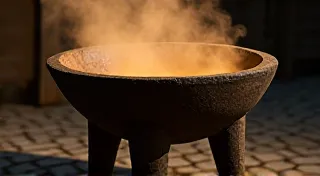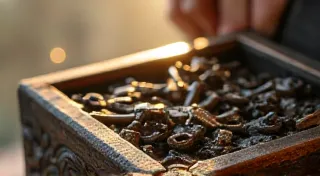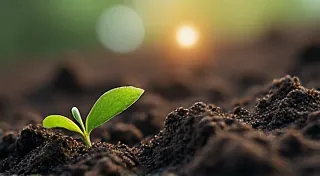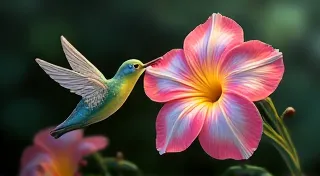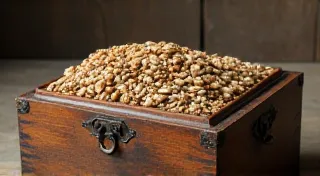Growing Heirloom Tomatoes in Containers: Your Complete & Expanded Guide
Welcome to a world where vibrant colors, intoxicating aromas, and unparalleled flavor burst from the confines of your patio, balcony, or even your windowsill. This is the world of container gardening, and we're here to guide you through the delightful journey of growing heirloom tomatoes in containers. Forget sprawling gardens; we're proving that small space gardening can yield a bountiful harvest of juicy, flavorful tomatoes, a testament to the power of ingenuity and a love for authentic taste. This isn't just a how-to; it's a deep dive into the art and science, covering everything from the history of heirloom tomatoes to troubleshooting complex nutrient deficiencies, all specifically tailored to the unique challenges and rewards of container cultivation.
For generations, heirloom tomatoes have captivated gardeners and food lovers alike. These are tomatoes passed down through families, their seeds representing a legacy of unique flavors and characteristics. Unlike their hybrid counterparts, heirlooms aren't bred for uniformity; they’re celebrated for their individuality – their shapes, colors, and, most importantly, their exquisite taste. The term "heirloom" typically refers to varieties that have been passed down for at least 50 years, though some definitions stretch that to 75 or even 100 years. They represent a connection to the past, a preservation of agricultural heritage. Unlike modern hybrids, which are often bred for disease resistance or higher yields, heirloom tomatoes are often prized for their distinctive flavors and textures, which can range from creamy and buttery to tangy and acidic. Consider the Brandywine, a pink heirloom celebrated for its rich, almost creamy texture and complex flavor. Or the Cherokee Purple, with its smoky, almost chocolate-like notes. These are flavors you simply won't find in most commercially available tomatoes.
Growing them in containers allows you to experience this richness, even if you lack traditional garden space. This guide is your comprehensive resource, covering everything from choosing the right varieties to troubleshooting common problems, specifically catering to the challenges and rewards of small space gardening. We’re not just showing you *how* to grow tomatoes; we’re exploring *why* heirloom tomatoes are special and how to nurture them for optimal flavor and health.
Why Container Gardening for Heirloom Tomatoes?
The appeal of container gardening extends far beyond simply maximizing space. It offers unparalleled control over the growing environment, making it ideal for small space gardening. You can move your tomatoes to chase the sun, protect them from harsh weather, and easily manage soil conditions. This level of control is particularly beneficial for heirloom tomatoes, which can be more susceptible to certain diseases or pests than more robust hybrids. They can also be a bit more finicky about soil conditions and nutrient availability. With container gardening, you have the power to create the perfect growing environment, tailored to the specific needs of your heirloom varieties.
Imagine the freedom of being able to move your tomato plants indoors during a late frost or to a more sheltered location during a particularly intense heatwave. This is the beauty of container gardening. Furthermore, it reduces the risk of soilborne diseases and pests, which can be a significant problem in traditional garden beds. And, of course, the aesthetic possibilities are endless! Imagine a cascading collection of colorful tomato plants transforming your balcony into a vibrant oasis – a perfect solution for limited garden areas. Container gardens are also a wonderful way to add visual interest to patios, balconies, and even rooftops.
Choosing the Right Heirloom Tomato Varieties for Small Spaces
The sheer variety of tomato varieties available can be overwhelming. Consider your space, your taste preferences, and your skill level when making your selection. For small space gardening, dwarf or bush varieties are often a great choice. These compact varieties don't require staking or caging, making them perfect for balconies and patios. However, even larger heirloom varieties can be successfully grown in containers, as long as you choose a large enough container and provide adequate support.
Do you crave a classic Brandywine with its rich, creamy texture and complex flavor? Or perhaps a vibrant Cherokee Purple with its smoky undertones and stunning dark purple color? What about a Green Zebra, with its tangy, slightly acidic taste and unique green-striped appearance? Delving into the nuances of each tomato variety is part of the fun. Before you choose, consider the size of the mature plant. Some heirlooms, like the Mortgage Lifter, can grow quite large, requiring a substantial container. Research the plant’s “vine length” - indeterminate varieties continue to grow throughout the season, needing much more space. Determinate varieties are bush-like and stop growing at a predetermined height.
For a deeper exploration into selecting the perfect tomato for your container garden, visit our page, "The Cartographer's Palette: Mapping Your Tomato Variety Selection". This page features detailed profiles of dozens of heirloom varieties, including information on their size, flavor, disease resistance, and ideal growing conditions.
Essential Container Gardening Techniques for Small Spaces
Successfully growing heirloom tomatoes in containers, especially when utilizing small space gardening, requires a few key techniques. Choosing the right container is paramount; it needs to be large enough to accommodate the root system of a mature tomato plant and provide adequate drainage. A general rule of thumb is to use a container that is at least 15-20 gallons in size for larger heirloom varieties. Smaller varieties can thrive in 10-15 gallon containers. Make sure the container has plenty of drainage holes to prevent waterlogging, which can lead to root rot.
Soil is another critical factor. Your soil mix should be rich in organic matter and provide excellent aeration. Avoid using garden soil directly in containers, as it tends to compact and doesn’t drain well. Instead, create your own potting mix by combining equal parts of peat moss, perlite, and compost. For a deep dive into unconventional growing mediums, explore "The Alchemist's Crucible: Experimenting with Unusual Tomato Growing Mediums". This page delves into alternatives like coco coir, vermicompost, and even repurposed materials for a truly unique and sustainable gardening experience.
Feeding your plants regularly with a balanced fertilizer will ensure they receive the nutrients they need to thrive. Look for a fertilizer that is specifically formulated for tomatoes and contains a good balance of nitrogen, phosphorus, and potassium. Start feeding your plants a few weeks after transplanting them into their containers.
Light, Water, and Temperature: The Tomato Gardener’s Trinity
Tomato gardening is heavily influenced by the environmental conditions. Like most fruiting plants, tomatoes demand at least six to eight hours of sunlight daily. Full sun exposure leads to sweeter, more flavorful tomatoes. For expert tips on maximizing sunlight exposure, even in shady areas, visit our page on “Optimizing Light for Container Gardens.” Even with container gardening, it’s possible to supplement natural light with grow lights, especially for indoor growing.
Consistent watering is also crucial. Tomatoes prefer consistently moist soil, but avoid overwatering, which can lead to root rot. Check the soil moisture regularly by sticking your finger into the soil. If the top inch or two of soil feels dry, it’s time to water. Water deeply, until water drains out of the bottom of the container.
Tomatoes thrive in warm temperatures, ideally between 70 and 85 degrees Fahrenheit. Protect your plants from frost and extreme heat. If temperatures are consistently above 90 degrees Fahrenheit, provide shade during the hottest part of the day.
Troubleshooting Common Tomato Problems
Even with the best care, tomato plants can sometimes encounter problems. Early blight, blossom end rot, and tomato hornworms are common issues. Early blight is a fungal disease that causes dark spots on the leaves. Blossom end rot is a calcium deficiency that causes the bottom of the fruit to rot. Tomato hornworms are large caterpillars that can devour entire plants in a matter of days. Early detection and intervention are key to preventing serious damage.
For detailed information on identifying and treating common tomato problems, visit our page on “Tomato Troubleshooting.” This resource provides step-by-step instructions for dealing with a wide range of issues.
Preserving Your Harvest
The fruits (pun intended!) of your labor are delicious, but the season flies by. Learn how to extend the bounty of your harvest with "The Alchemist's Garden: Fermenting Tomato Magic for Winter's Bounty". Discover the art of canning, freezing, and drying your tomatoes so you can enjoy their flavor long after the growing season has ended.
Preserving the Legacy
Discover the secrets to "The Storyteller’s Seed: Propagating Heirloom Tomato Varieties for Future Generations". Saving seeds from your heirloom tomatoes is a rewarding way to preserve these precious varieties for future generations. It's also a wonderful way to connect with the history of these plants and to share their unique flavors with others.
Further Exploration
Dig deeper into unique aspects of tomato cultivation with "Echoes of the Earth: Understanding the Soil Ecosystem in Container Tomato Gardens", and "A Symphony of Scents: Capturing the Aromatic Essence of Heirloom Tomatoes". The first explores the crucial role of soil microbes, and the second focuses on how growing techniques can enhance the aromatic complexity of your tomatoes.
Region-Specific Guidance
Tailor your growing strategy based on your local climate and conditions with "The Cartographer's Charts: Region-Specific Container Tomato Growing Guides".
Documenting Your Journey
Keep a journal of your growing experience with "The Sun-Kissed Memoir: Journaling Through a Season of Tomato Growing". Record your observations, experiments, and successes – you’re contributing to a living archive of heirloom tomato cultivation!
Embrace the unique challenges and rewards of growing heirloom tomatoes in containers, especially rewarding for those embracing small space gardening. We hope this guide serves as your faithful companion on this enriching journey. Happy gardening!
